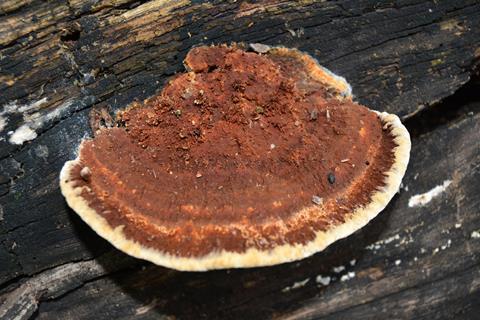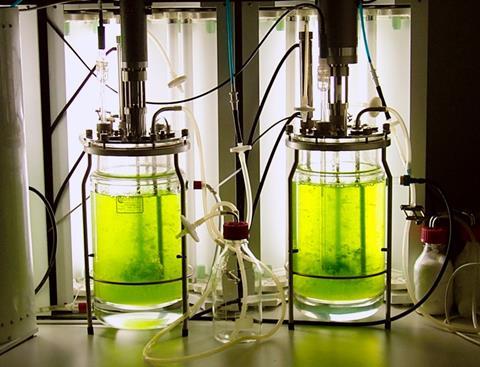Davnina Salvachua works at the National Renewable Energy Laboratory is an editor for Microbial Biotechnology. Below is a Q&A about her work in lignin depolymerisation and fuel production from microbial bioreactors.
You have worked extensively on lignin degradation. What is it about the field that has kept you hooked since your PhD?
Lignin is a complex polymer in plants and the second major source of organic carbon in our planet. However, we still have many biological questions about how the carbon in lignin ‘travels’ in our forests (from lignin breakdown to mineralisation to CO2 and water). Apart from addressing these fundamental questions, one of my passions is also trying to valorise (make money from) lignin. Currently, lignin is mainly burnt to generate energy, but I believe we can find better uses for this polymer (and we are working on that!). Specifically, some of our projects focus on converting this biopolymer into chemicals using biological tools and finding more sustainable alternatives for their production compared to the petrochemical industry.
Promoted: AMI has teamed up with QIAGEN to help you get the highest yields from your soil DNA Extractions. Get your free guide here.
An area of your work focuses on identifying metabolic pathways in white-rot fungi, the most efficient lignin degrading organism in nature. What is it about this fungi that makes it so effective?
White-rot fungi are the only fungal group that has evolved to secrete a powerful set of enzymes to initiate ‘lignin digestion’ outside the fungal cells and successfully degrade the polymer. A very inspiring study for all the work I do is based on a paper published in Science in 2012 by Floudas et al. which hypothesised that the Carboniferous period ended in part due to the secretion of lignin-degrading enzymes by these white-rot fungi (this was a major event in our planet!). What it is even more fascinating to me is that since the Carboniferous period (300 million years ago), evolution has not favoured any other biological mechanism to our knowledge to degrade lignin more effectively than these enzymes.

We are seeing fungi more and more in the public sphere being touted as the solutions to many real-world problems. How far-reaching do you think the applications of fungi could be in the future?
Fungi have been used for thousands of years and we are using them today as food sources (oyster mushrooms, for example) or to produce fermented products (bread and beer). In the food realm, fungi are also being used as meat replacements. However, other exciting opportunities are turning up for these organisms. For instance, fungi are being used in the fashion industry (mycelia that mimics leather) and architecture (for building materials based on fungal mycelia), which are opportunities to decrease our dependence on products from the petrochemical industry. Fungi, including white-rot fungi, also produce a large variety of secondary metabolites (many of which remain unknown) that may be useful for medical or biotechnological purposes. Within my research, utilising white-rot fungi to directly convert plant residues (renewable sources) to chemicals and material precursors is ongoing, which is a path that we still need to develop further before these approaches can be applied in industry.
I can see on the NREL website that you hold several patents. Can you tell us about the work that went into these and their applications?
Most of these patents have a similar focus: our team genetically modifies bacteria to utilise the carbon derived from plants and convert it into biochemicals and material precursors with market sizes. To be relevant for industrial applications, this bioconversion work is conducted in bioreactors. Developing bioprocesses in bioreactors is also one of my passions because you get push the bacteria to their limits which ultimately informs further metabolic engineering efforts to continue improving the microbes.

Can you tell us about some of the other ongoing work in your lab at the moment, and what the future holds?
Apart from converting plant-derived biomass into useful products, our laboratories are also working on deconstructing plastics using enzymes for further upcycling into biochemicals or other plastics that have better recycling capacity. This is extremely exciting considering the excess of plastic waste and its impact on our planet. Other exciting projects in our centre also focus on capturing CO2 from air and utilising waste residues to make value-added compounds from those carbon sources using biological tools. Overall, we are all working towards developing the Bioeconomy.
As one of our journal editors, it would be great to hear your advice for any Early Career Scientists who would like to get into editing for journals?
I have been an editor at Microbial Biotechnology for over a year. Although it is not a long time in this role, I can say that I truly enjoy it. Being an editor forces you think ‘out of the box’ and learn about research fields that are not within one’s direct area of expertise. This is not only inspiring to come up with ideas for our own research fields but to continuously question our science (which, as a scientist, is necessary to improve every day). In addition, being an editor gives you the opportunity to expand your network and search for potential collaborators.








No comments yet